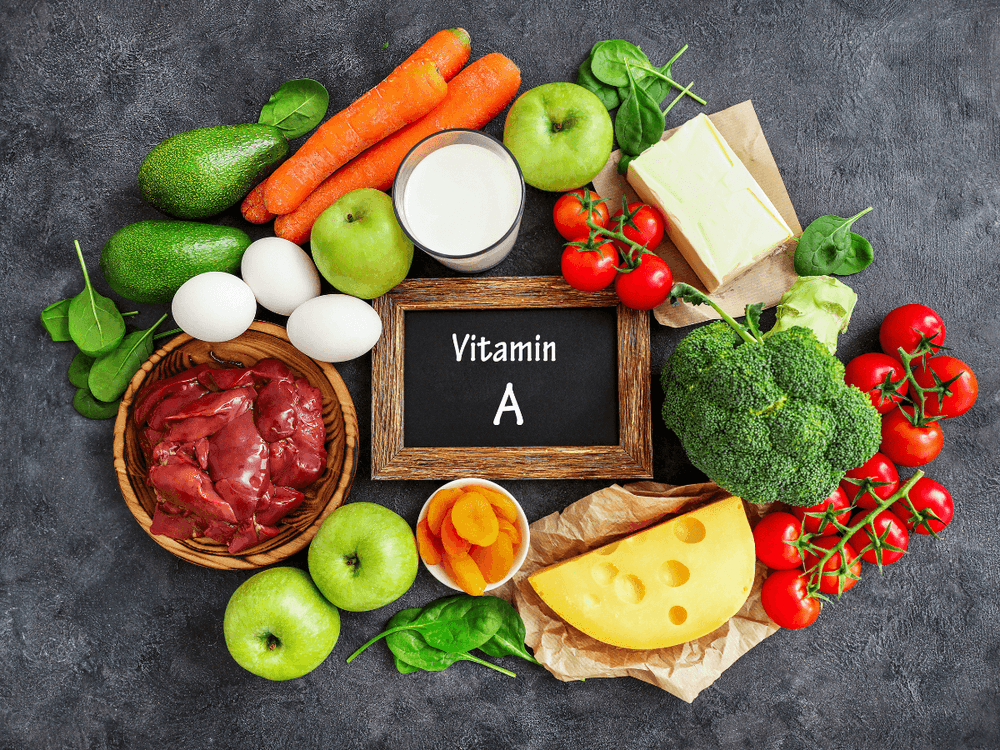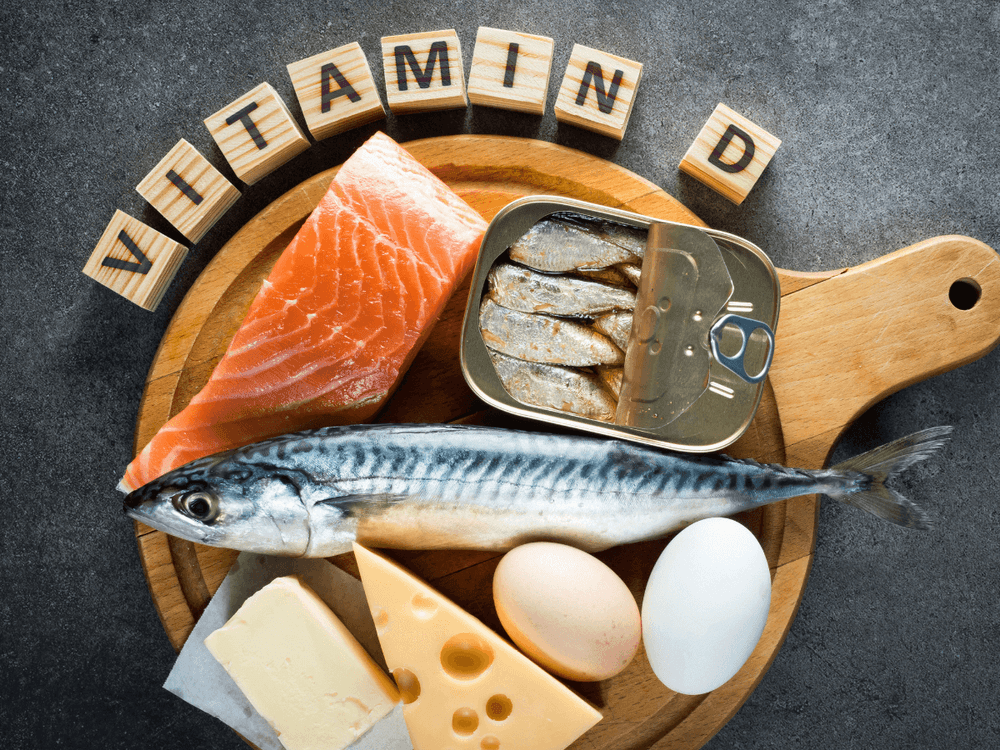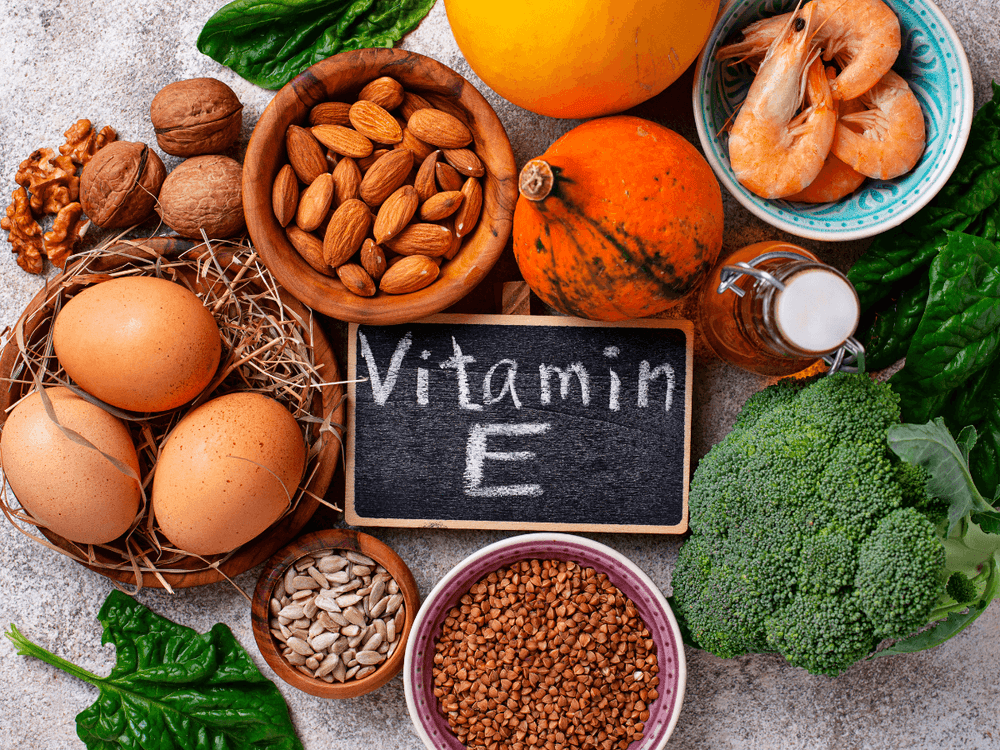Essentielles à notre organisme, les vitamines sont souvent citées comme premières briques de notre santé. Au nombre de 13, les vitamines sont impliquées dans de nombreux processus physiologiques.
Elles sont classées en deux catégories selon leur nature chimique. Les vitamines dites hydrosolubles, que l’on retrouve dans la circulation sanguine, avec les 8 vitamines du groupe B et la vitamine C. Et les vitamines liposolubles, les vitamines A, D, E et K. Notre corps est capable de stocker ces vitamines au niveau du foie et de notre tissu adipeux.
Dans cet article, nous vous présentons les vitamines, ainsi qu’un focus sur les vitamines liposolubles, les vitamines A, D, K et E : leurs bienfaits, les apports nécessaires à notre bonne santé, les risques de déficits ou carences, ainsi que leurs sources alimentaires.
Que sont les vitamines ?
Les vitamines sont des éléments organiques essentiels au bon fonctionnement de notre organisme. Elles ont la particularité d’être nécessaires en très petites quantités pour assurer notre santé.
Globalement, c’est dans notre alimentation que nous devons puiser les vitamines, car notre corps ne sait pas les produire par lui-même, à l’exception de deux d’entre elles, les vitamines D et K.
Les vitamines n’ont pas de valeur énergétique, c’est-à-dire qu’elles ne sont pas caloriques. Et pour chacune d’entre elle, il existe des valeurs de référence nutritionnelle indiquant la quantité journalière cible pour notre santé (RNP : Référence Nutritionnelle pour la Population ou AS : Apports Satisfaisants).
Les fonctions des vitamines dans l’organisme
Les vitamines sont indispensables au bon fonctionnement de plusieurs mécanismes physiologiques. On peut définir deux catégories de bienfaits des vitamines pour notre organisme :
- Un rôle de structure : les vitamines sont essentielles à plusieurs éléments structurels de notre corps comme la croissance et la santé de nos os, les différentes activités cellulaires, la formation de nos tissus et de notre peau...
- Un rôle de fonctionnement : au-delà de leur implication dans la structure de notre corps, les vitamines assurent le fonctionnement de nombreux systèmes comme le système nerveux, le système musculaire, le système immunitaire, ou encore le système cardiaque. Elles sont également impliquées dans la synthèse d’ADN, la vision, la digestion...

Les vitamines liposolubles : la vitamine A
La vitamine A est aussi couramment appelée rétinol. Elle possède un précurseur, la provitamine A (pro-rétinol), que l’on trouve dans la grande famille des caroténoïdes dont le plus connu est le bêta-carotène.
Les fonctions de la vitamine A :
Système immunitaire : la vitamine A contribue au fonctionnement normal du système immunitaire.
Vision : la vitamine A contribue au maintien d’une vision normale.
Activité cellulaire : la vitamine A joue un rôle dans le processus de spécialisation cellulaire.
Métabolisme du fer : la vitamine A contribue au métabolisme normal du fer.
Santé de la peau et des muqueuses : la vitamine A contribue au maintien d’une peau normale. La vitamine A contribue au maintien de muqueuses normales.
Les risques d’une carence en vitamine A :
Des retards de croissance intra-utérine et post-natale, des malformations congénitales, une sécheresse oculaire, une perte de la vision crépusculaire.
Les apports de référence en vitamine A :
Valeur : RNP (Référence Nutritionnelle pour la Population)
Homme adulte : 580 μg / jour
Femme adulte : 490 μg / jour
Femme enceinte : 540 μg / jour
Femme allaitante : 1 020 μg / jour
Les sources de vitamine A :
Aliments d’origine animale :
L’huile de foie de morue (30 000 μg / 100 g), les abats et le foie (14 500 à 4 000 μg / 100 g), les poissons (1 100 à 285 μg / 100 g), le beurre (800 μg / 100 g), la crème fraîche (390 μg / 100 g), les fromages (265 à 350 μg / 100 g), les œufs (230 à 450 μg / 100 g).
Aliments d’origine végétale :
La patate douce (10 500 μg / 100 g), la carotte (7 200 μg / 100 g), les courges (6 900 μg / 100 g), les salades (5 300 μg / 100 g), les épinards (4 000 μg / 100 g), l’abricot (2 100 μg / 100 g), le melon (1 900 μg / 100 g), la tomate (1 600 μg / 100 g), le poivron rouge (1 500 μg / 100 g), la mangue (1 200 μg / 100 g).

Les vitamines liposolubles : la vitamine D
La vitamine D est l’une des deux vitamines que notre organisme sait synthétiser. Elle possède une activité hormonale et existe sous deux formes : la forme D2 appelée ergocalciférol et d’origine végétale, et la forme D3 appelée cholécalciférol, essentiellement d’origine animale. L’exposition au soleil (15 à 20 minutes suffisent) permet la synthèse de la vitamine D3 dans l’épiderme de notre peau.
Les fonctions de la vitamine D :
Santé osseuse : la vitamine D contribue au maintien d’une ossature normale. La vitamine D contribue à un taux de calcium dans le sang (calcémie) normale.
Activité cellulaire : la vitamine D joue un rôle dans la division cellulaire.
Système musculaire : la vitamine D contribue au maintien d’une fonction musculaire normale.
Système immunitaire : la vitamine D contribue au fonctionnement normal du système immunitaire.
Grossesse et Enfants : la vitamine D est nécessaire à une croissance et un développement osseux normaux des enfants.
Les risques d’une carence en vitamine D :
Un déficit en vitamine D réduit la densité osseuse, fragilisant notre squelette et pouvant favoriser l’ostéoporose. Une carence entraîne une altération dans le processus de minéralisation osseuse qui se traduit par le rachitisme chez les enfants et l’ostéomalacie chez les adultes.
Les apports de référence en vitamine D :
Valeur : AS (Apports Satisfaisants)
Homme adulte : 15 μg / jour
Femme adulte : 15 μg / jour
Femme enceinte : 15 μg / jour
Femme allaitante : 15 μg / jour
Les sources de vitamine D :
Aliments d’origine animale :
L’huile de foie de morue (250 μg / 100 g), le foie de morue (54 μg / 100 g), les œufs de poisson (cabillaud et saumon - 27 μg / 100 g), le hareng (22 μg / 100 g), les poissons (flétan, tilapia, truite, espadon – entre 21 et 15 μg / 100 g).
Aliments d’origine végétale :
Les matières grasses d’origine végétale type margarine (7,5 μg / 100 g).

Les vitamines liposolubles : la vitamine E
La vitamine E regroupe plusieurs composés aux propriétés antioxydantes : des tocophérols (alpha, bêta, delta et gamma) et des tocotriénols (alpha, bêta, delta et gamma). Par son action antioxydante, elle aide à préserver l’organisme en limitant le vieillissement.
Les fonctions de la vitamine E :
Activité cellulaire : la vitamine E contribue à protéger les cellules contre le stress oxydatif. Ce qui la rend intéressante pour préserver les fonctions cognitives, mais aussi préserver la masse musculaire et la récupération.
Les risques d’une carence en vitamine E :
Une carence en vitamine E peut conduire à une dégénérescence neurologique.
Les apports de référence en vitamine E :
Valeur : AS (Apports Satisfaisants)
Homme adulte : 10 mg / jour
Femme adulte : 9 mg / jour
Femme enceinte : 9 mg / jour
Femme allaitante : 9 mg / jour
Les sources de vitamine E :
Aliments d’origine végétale :
L’huile de germe de blé (149 mg / 100 g), l’huile de tournesol (57 mg / 100 g), l’huile d’avocat (45 mg / 100 g), les matières grasses d’origine végétale type margarine (23 mg / 100 g), l’huile d’olive (22 mg / 100 g).
Aliments d’origine animale :
L’huile de foie de morue (30 mg / 100 g).

Les vitamines liposolubles : la vitamine K
Chez l’homme, la vitamine K regroupe les vitamines K1 (phylloquinone) et K2 (ménaquinone).
Les différents rôles et fonctions de la vitamine K :
Activité cellulaire : la vitamine K (K1) contribue à une coagulation sanguine normale.
Santé osseuse : la vitamine K (K2) contribue au maintien d’une ossature normale.
Les risques d’une carence en vitamine K :
Un déficit alimentaire en vitamine K est rare et peut entraîner une moins bonne absorption des lipides.
Les apports de référence en vitamine K :
Valeur : AS (Apports Satisfaisants) pour la vitamine K1 (peu de données existent sur les besoins en K2).
Homme adulte : 79 μg / jour
Femme adulte : 79 μg / jour
Femme enceinte : 79 μg / jour
Femme allaitante : 79 μg / jour
Les sources de vitamine K :
Vitamine K1 - Aliments d’origine végétale :
Les herbes séchées (basilic, sauge, thym, persil – 1 200 à 1 700 μg / jour), le chou frisé (820 μg / jour), les épinards (500 μg / jour), l’huile de soja (360 μg / jour), les choux de Bruxelles (200 μg / jour), le brocoli (180 μg / jour).
Vitamine K2 - Aliments d’origine animale :
Le foie d’oie (360 μg / 100 g), le poulet (34 μg / 100 g), le jaune d’œuf cru (32 μg / 100 g), le
beurre (15 μg / 100 g).
D’autres vitamines sont également essentielles à notre santé, ce sont les vitamines hydrosolubles, les vitamines du groupe B (B1, B2, B3, B5, B6, B8, B9, B12) et la vitamine C. Absorbées au niveau de l’intestin grêle, elles ne sont pas stockées dans notre organisme. La circulation sanguine leur permet d’atteindre leurs sites d’action où elles seront directement utilisées.
Une alimentation variée, riche en fruits et légumes, avec des apports protéiques adaptés, et des céréales permet de soutenir nos différents besoins en vitamines.

